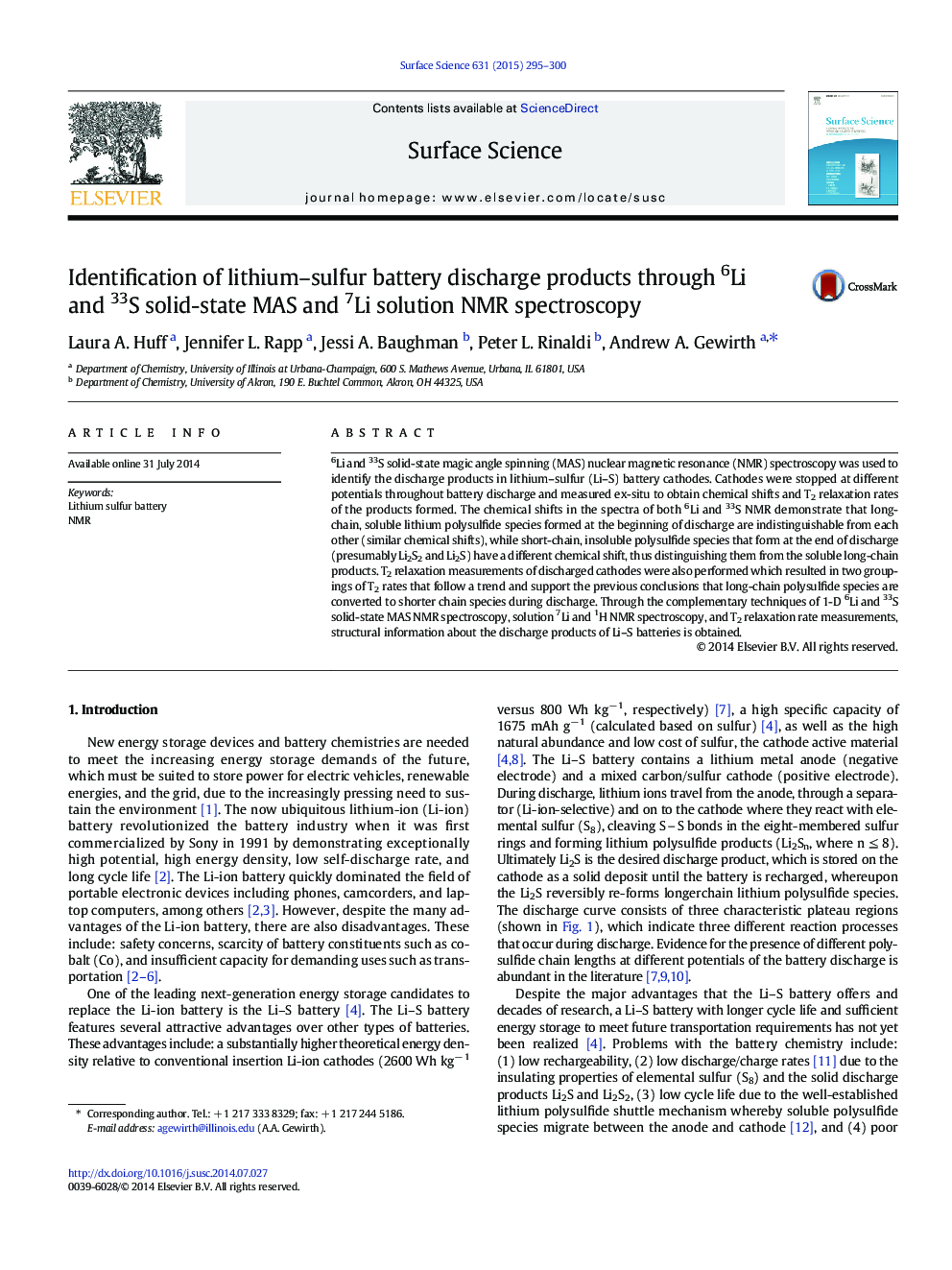| Article ID | Journal | Published Year | Pages | File Type |
|---|---|---|---|---|
| 5421969 | Surface Science | 2015 | 6 Pages |
Abstract
6Li and 33S solid-state magic angle spinning (MAS) nuclear magnetic resonance (NMR) spectroscopy was used to identify the discharge products in lithium-sulfur (Li-S) battery cathodes. Cathodes were stopped at different potentials throughout battery discharge and measured ex-situ to obtain chemical shifts and T2 relaxation rates of the products formed. The chemical shifts in the spectra of both 6Li and 33S NMR demonstrate that long-chain, soluble lithium polysulfide species formed at the beginning of discharge are indistinguishable from each other (similar chemical shifts), while short-chain, insoluble polysulfide species that form at the end of discharge (presumably Li2S2 and Li2S) have a different chemical shift, thus distinguishing them from the soluble long-chain products. T2 relaxation measurements of discharged cathodes were also performed which resulted in two groupings of T2 rates that follow a trend and support the previous conclusions that long-chain polysulfide species are converted to shorter chain species during discharge. Through the complementary techniques of 1-D 6Li and 33S solid-state MAS NMR spectroscopy, solution 7Li and 1H NMR spectroscopy, and T2 relaxation rate measurements, structural information about the discharge products of Li-S batteries is obtained.
Keywords
Related Topics
Physical Sciences and Engineering
Chemistry
Physical and Theoretical Chemistry
Authors
Laura A. Huff, Jennifer L. Rapp, Jessi A. Baughman, Peter L. Rinaldi, Andrew A. Gewirth,
